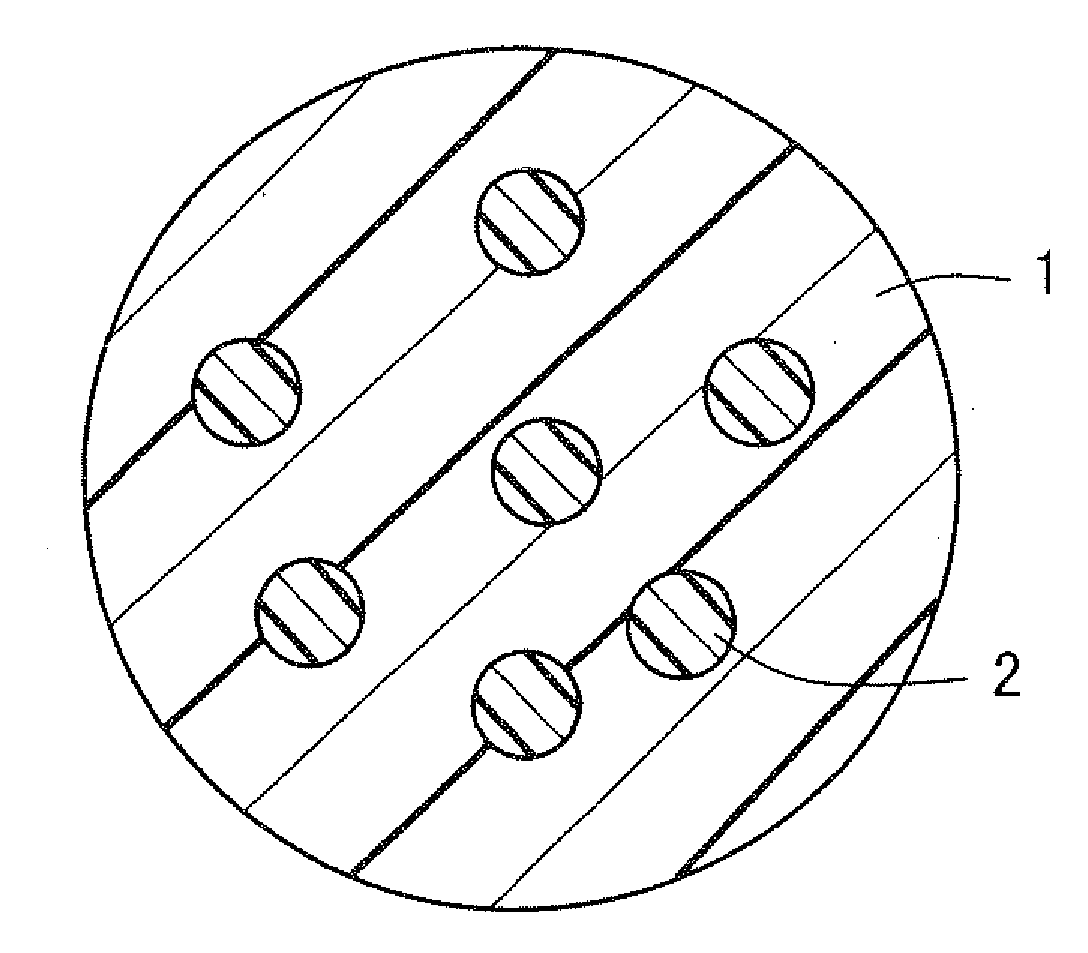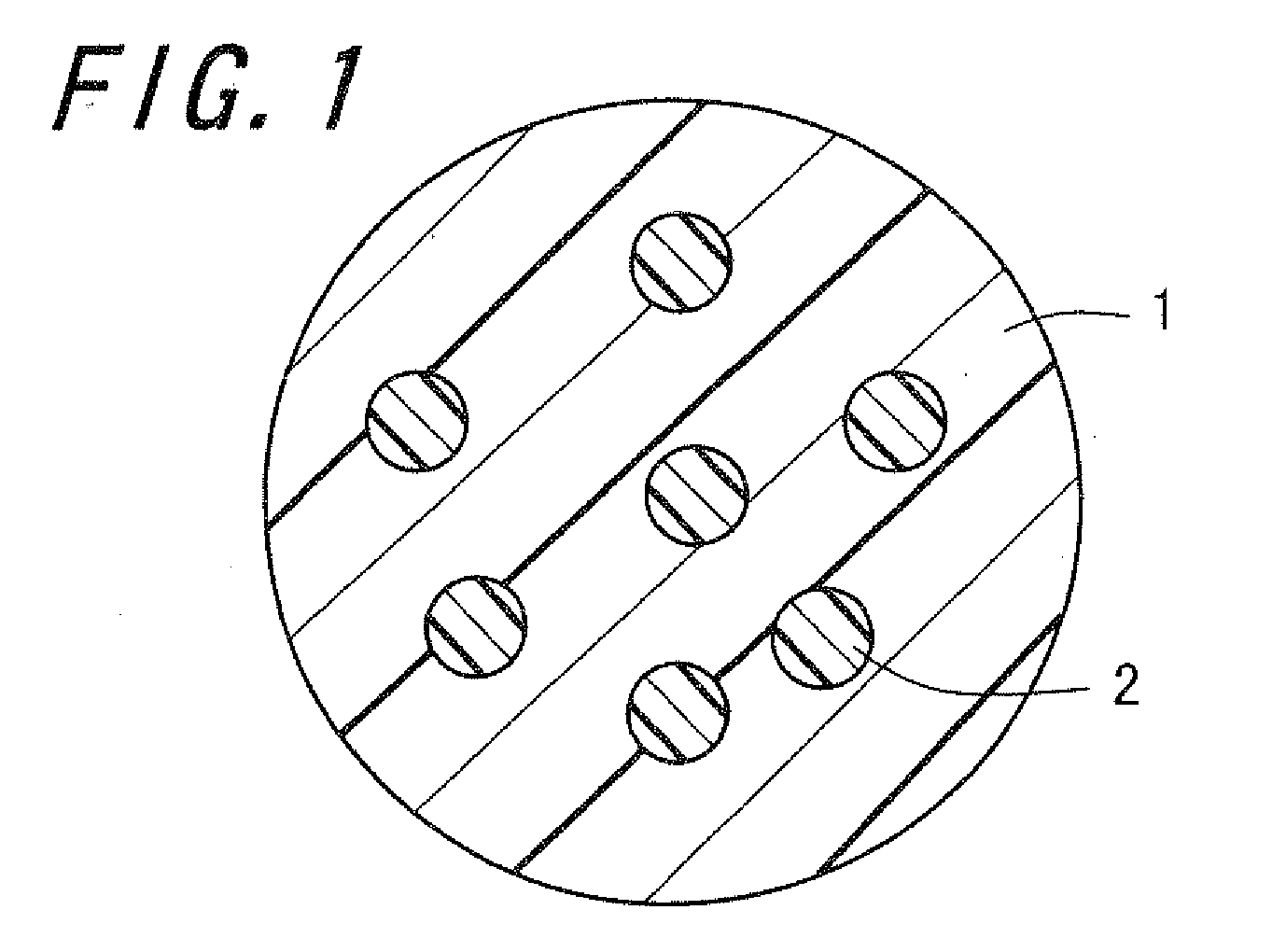Toner, method of manufacturing the toner, developing device, and image forming apparatus
a technology of toner and developing device, which is applied in the field of toner, can solve the problems of emitted carbon dioxide, in the air, becoming the source of environmental pollution, etc., and achieve the effect of preventing the occurrence of environmental pollution caused by waste toner and high transparency
- Summary
- Abstract
- Description
- Claims
- Application Information
AI Technical Summary
Benefits of technology
Problems solved by technology
Method used
Image
Examples
example 1
Production of Coloring Resin Particle Slurry
[0264]Polyester resin (glass transition temperature (Tg): 58° C., softening temperature (Tm): 110° C.) in an amount of 82 parts by weight, phthalocyanine blue (trade name: Copper phthalocyanine 15:3, manufactured by Clariant Corporation) in an amount of 8 parts by weight, a paraffin-based wax (melting temperature: 85° C.) in an amount of 8 parts by weight, and a charge control agent (trade name: TRH, manufactured by Hodogaya Chemical Co., Ltd.) in an amount of 2 parts by weight were mixed together by Henschel Mixer for 10 minutes. The mixture was melt-kneaded by a twin-screw extrusion kneader (trade name: PCM 65, manufactured by Ikegai, Ltd.) the resultant melt-kneaded product of 100 g (in an amount of 10 parts by weight), sodium polyacrylate (trade name: D-H14-N L-7403 KN, manufactured by Nippon Nyukazai Co., Ltd.) of 3 g (in an amount of 0.3 parts by weight), which was added as an anionic surfactant, and water (temperature: 20° C., elect...
example 2
Production of Coloring Resin Particle Slurry
[0269]Polyester resin (glass transition temperature (Tg): 58° C., softening temperature (Tm): 110° C.) in an amount of 86 parts by weight, phthalocyanine blue (trade name: Copper phthalocyanine 15:3, manufactured by Clariant Corporation) in an amount of 4 parts by weight, a paraffin-based wax (melting temperature: 85° C.) in an amount of 8 parts by weight, and a charge control agent (trade name: TRH, manufactured by Hodogaya Chemical Industries) in an amount of 2 parts by weight were mixed together by Henschel Mixer for 10 minutes. The mixture was melt-kneaded by a twin-screw extrusion kneader (trade name: PCM 65, manufactured by Ikegai, Ltd.) the resultant melt-kneaded product of 100 g (in an amount of 10 parts by weight), sodium polyacrylate (trade name: D-H14-N L-7403 KN, manufactured by Nippon Nyukazai Co., Ltd.) of 3 g (in an amount of 0.3 parts by weight), which was added as an anionic surfactant, and water (temperature: 20° C., elec...
example 3
[0274]Toner particles having a volumetric average particle size of 5.4 μm (coefficient of variation (CV value): 22) were formed basically in the same manner as adopted in Example 1, except that, in the production process of the biomass resin particle slurry, the finely granulating step was conducted under a temperature condition of 180° C. and a pressure condition of 250 MPa, so that a biomass resin particle slurry having a volumetric average particle size of 0.60 μm (coefficient of variation (CV value): 40) could be formed. The toner particles thus obtained in an amount of 200 parts by weight and hydrophobic silica fine particles (trade name: RX-200, manufactured by Nippon Aerosil Co., Ltd.) in an amount of 2.5 parts by weight were mixed together to form a toner of Example 3.
PUM
| Property | Measurement | Unit |
|---|---|---|
| diameter | aaaaa | aaaaa |
| diameter | aaaaa | aaaaa |
| domain diameter | aaaaa | aaaaa |
Abstract
Description
Claims
Application Information
 Login to View More
Login to View More - R&D
- Intellectual Property
- Life Sciences
- Materials
- Tech Scout
- Unparalleled Data Quality
- Higher Quality Content
- 60% Fewer Hallucinations
Browse by: Latest US Patents, China's latest patents, Technical Efficacy Thesaurus, Application Domain, Technology Topic, Popular Technical Reports.
© 2025 PatSnap. All rights reserved.Legal|Privacy policy|Modern Slavery Act Transparency Statement|Sitemap|About US| Contact US: help@patsnap.com



